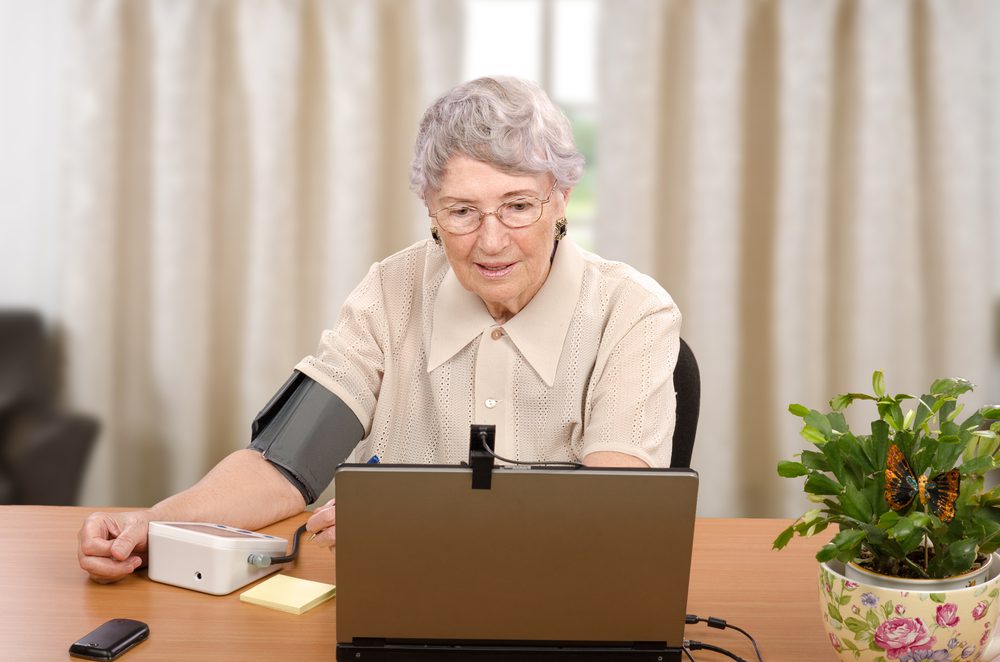
Because of the coronavirus pandemic and social distancing measures, heading to your doctor’s office for your annual tests or routine checkup is not as easy as it used to be. This does not mean you’ll never get to see your doctor ever again; you’ll just see not see him in person for a while.
Amid the COVID-19 pandemic, more and more doctors are turning to virtual appointments, also called telehealth services. “Our volume is down, as we rescheduled all physicals and wellness visits out until June,” she said. “All acute care and routine follow-up visits will be done by 100% video visit,” Gina Tobalina, M.D., of El Dorado Hills, Calif. said.
Patients “are relieved to be able to connect with us and to see our faces,” she said. “It offers a lot of reassurance to them. They are worried about us, too, and they are glad to hear that we are OK and up and running. There are no apologies needed as they are so thankful to be able to see and hear us.”
If you’ve never done a virtual visit with your doctor, here’s what you need to know:
Your insurance probably covers a telehealth appointment
Back in the days when we didn’t have to hide and fear the coronavirus, most health insurance did not include virtual visits to the doctor. After all, why should they? Most of us were free to go for medical checkups and examinations whenever we wanted or needed. Things are different now and medical insurance programs had to be adjusted to the current situation.
That being said, according to James R. Powell, MD, CEO of Long Island Select Healthcare, both Medicaid and Medicare adjusted their policies in March and April to “encourage telehealth use for this emergency period,” and other “commercial insurers are following suit.”
“Ask your doctor’s office whether they are providing telehealth as an alternative to an in-clinic visit and whether it will be covered. Call your insurer to ask about telehealth coverage or go online to see your covered benefits. They may have updated their websites to reflect the answer to your questions,” he says. “Many insurers have sent us letters letting us know that they will be covering telemedicine services until this crisis is over.”

Your doctor can prescribe certain medicines over video
According to Nishant Rao, ND, chief medical officer for telehealth company Doc Talk Go, the prescription of medicine is up to each doctor. If your general practitioner believes he can accurately give you a diagnosis via video as they would in person, then they are allowed to prescribe you the necessary medication. After that, you can get your medications from your local pharmacy or patiently wait while they’re being mailed to your home.
However, controlled substances cannot be prescribed by telemedicine,” Rao says. “Generally speaking, these are medicines that are addictive and have far more ability to result in abuse or addiction. Outside of that, it’s very much case by case.”
Doctors want you to have a real purpose for the appointment
It’s paramount that you schedule your virtual visit for a specific purpose, according to Carley Gordon, owner of Peony Health Coordination. “The best thing you can do is go in with a goal—or a few goals—and a list of questions,” she says. “Having a guiding purpose for the virtual visit is key and will keep you on track.”
Seema Sarin, MD, of EHE Health recommends patients to “write down a list of [their] symptoms” and to keep their insurance card handy during the virtual visit, in case they need it.

Doctors need you to have any available tools on hand
A normal medical visit implies having your vital signs taken, such as blood pressure and temperature. During a virtual medical appointment, your doctor will not be able to do all that. That’s where you come in. In order for your doctor to receive accurate information about your condition, it’s important that you have certain measurement tools on hand.
According to Nicole Washington, DO, psychiatrist and chief medical officer at Elocin Psychiatric Services, you should have a thermometer and blood pressure cuff on hand during the virtual visit and use them if required.
If not, for “longer-term, chronic issues,” Amanda Gorman, CRNP, founder of Nest Collaborative, says that your health provider should be able to give you “specialized home monitoring equipment that can more accurately record these numbers.”
The virtual calls system may be different, depending on each medical office
Just like companies use different platforms for their administrative, financial or PR services, doctors could also use various telehealth platforms or apps to connect with patients. Jesse P. Houghton, MD, of Southern Ohio Medical Center recommends that you do your research and find out the specifics of your future virtual appointment by contacting the staff at your doctor’s office. This way, you can make sure you’ve got everything installed and ready for the video appointment.
“My office uses a software called Doxy.me, however, there are several other platforms that can be used,” he says. Houghton’s office sends a link to patients’ phones before the actual virtual call.

Be prepared for potential connection problems
Technological advancements usually work in our favor, but they can sometimes let us down in the most inappropriate moments. During a virtual appointment, for instance. Many patients and doctors are concerned that the internet might not work properly during an appointment and that various tech issues might get in the way.
If you’re using a telehealth platform, Kellie Antinori-Lent, MSN, president of the Association of Diabetes Care and Education Specialists, says you should inquire about “the minimum bandwidth required to make sure you won’t have connection issues. If you aren’t sure what your bandwidth at home is, you can call your internet provider.” “If you’re using your phone, ensure it is using the most current operating system,” she recommends.
Doctors have been using telehealth platforms for at least 10 years
You might think telehealth services have been developed in light of the coronavirus pandemic. In reality, online medical services have been used by doctors and patients alike, for at least ten years. Some may not trust online telemedical services but according to David Frank, DMD, of Walden Dental, an online medical visit can be the “same caliber of quality care as compared to in-office visitation.”
“Aside from the convenience from home, the virtual medical visit really helps to screen patients on a level of urgency to be seen at an in-office healthcare facility,” Frank says. “In respect to our national efforts to limit the pace of COVID-19 contamination, telemedicine and virtual doctor appointments are incredibly helpful to categorize the elective medical concerns versus urgent, potentially life-threatening illness.”























